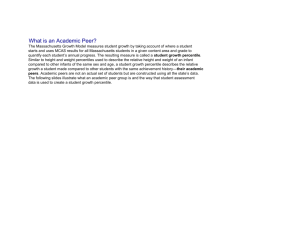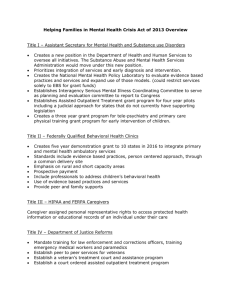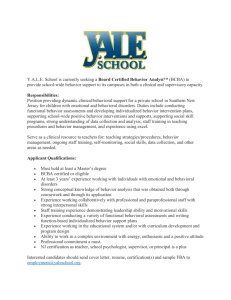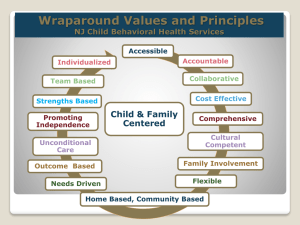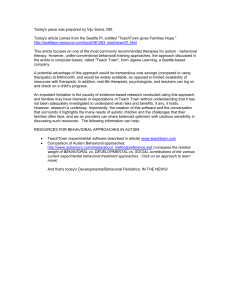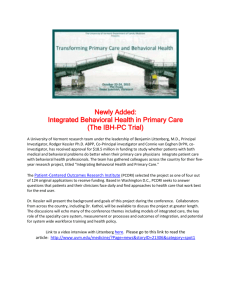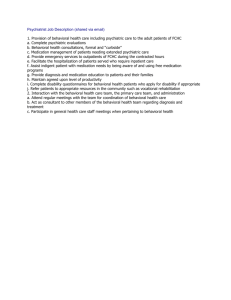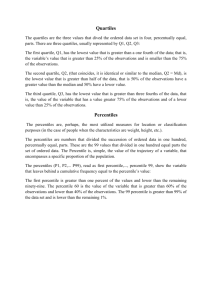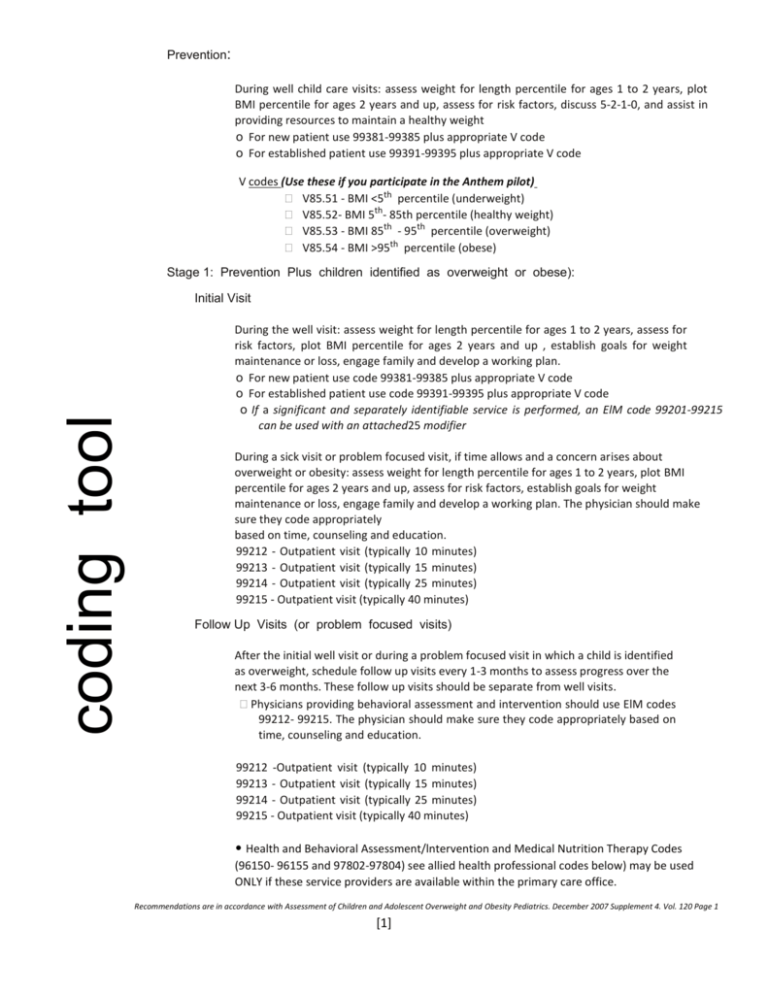
Prevention:
During well child care visits: assess weight for length percentile for ages 1 to 2 years, plot
BMI percentile for ages 2 years and up, assess for risk factors, discuss 5-2-1-0, and assist in
providing resources to maintain a healthy weight
ο For new patient use 99381-99385 plus appropriate V code
ο For established patient use 99391-99395 plus appropriate V code
V codes (Use these if you participate in the Anthem pilot)
V85.51 - BMI <5th percentile (underweight)
V85.52- BMI 5th- 85th percentile (healthy weight)
V85.53 - BMI 85th - 95th percentile (overweight)
V85.54 - BMI >95th percentile (obese)
Stage 1: Prevention Plus children identified as overweight or obese):
coding tool
Initial Visit
During the well visit: assess weight for length percentile for ages 1 to 2 years, assess for
risk factors, plot BMI percentile for ages 2 years and up , establish goals for weight
maintenance or loss, engage family and develop a working plan.
ο For new patient use code 99381-99385 plus appropriate V code
ο For established patient use code 99391-99395 plus appropriate V code
ο If a significant and separately identifiable service is performed, an ElM code 99201-99215
can be used with an attached25 modifier
During a sick visit or problem focused visit, if time allows and a concern arises about
overweight or obesity: assess weight for length percentile for ages 1 to 2 years, plot BMI
percentile for ages 2 years and up, assess for risk factors, establish goals for weight
maintenance or loss, engage family and develop a working plan. The physician should make
sure they code appropriately
based on time, counseling and education.
99212 - Outpatient visit (typically 10 minutes)
99213 - Outpatient visit (typically 15 minutes)
99214 - Outpatient visit (typically 25 minutes)
99215 - Outpatient visit (typically 40 minutes)
Follow Up Visits (or problem focused visits)
After the initial well visit or during a problem focused visit in which a child is identified
as overweight, schedule follow up visits every 1-3 months to assess progress over the
next 3-6 months. These follow up visits should be separate from well visits.
Physicians providing behavioral assessment and intervention should use ElM codes
99212- 99215. The physician should make sure they code appropriately based on
time, counseling and education.
99212 -Outpatient visit (typically 10 minutes)
99213 - Outpatient visit (typically 15 minutes)
99214 - Outpatient visit (typically 25 minutes)
99215 - Outpatient visit (typically 40 minutes)
• Health and Behavioral Assessment/lntervention and Medical Nutrition Therapy Codes
(96150- 96155 and 97802-97804) see allied health professional codes below) may be used
ONLY if these service providers are available within the primary care office.
Recommendations are in accordance with Assessment of Children and Adolescent Overweight and Obesity Pediatrics. December 2007 Supplement 4. Vol. 120 Page 1
[1]
coding tool
Stage 2: Structured Weight Management (Primary care plus support)
This stage is for a patient who needs services beyond those that could be provided by a primary care
clinician’s office. Additional services may include an assessment by a registered dietician and/or behavioral health
provider, as well as utilization of exercise programs appropriate for youth.
Primary care clinicians continue to use E/M codes 99212-99215 for follow up visits as above and initiate
additional services as appropriate. Check with insurance companies regarding coverage of and prior
authorization requirements for nutrition and behavioral health services.
Stages 3 and 4:
These stages are for patients who need more intensive weight management interventions than what can be
provided in the primary care office with support. However, primary care clinicians should still follow these
patients in addition to the specialized care providers. Stage 3 includes comprehensive, multidisciplinary
intervention (ie. gastroenterologist, endocrinologist, cardiologist, bariatric). Stage 4 includes tertiary care
center intervention for more intensive management.
ICD-9 Codes clinicians should document when applicable
783.1 - Abnormal weight gain
701.2 – Acanthosis Nigricans
V18.0 - Family history Diabetes Mellitus
V17.49 - Family history heart disease
272.0 - Hyperlipidemia
272.4 - Other Hyperlipidemia
401.9 - Hypertension
277.7 - Insulin Resistance
Other ICD-9 codes that may apply to office visits:
Congenital Anomalies
758.0 Down syndrome
759.81 Prader-Willi syndrome
759.83 Fragile X syndrome
759.89 Other specified anomalies (Laurence-Moon syndrome)
[2]
Women’s Health
611.1 Hypertrophy of the breast
coding tool
Digestive system
530.81 Esophageal reflux
564.0 Constipation, unspecificed
571.8 Other chronic nonalcoholic liver disease
Mental disorder
300.0 Anxiety state, unspecified
300.02 Generalized anxiety disorder
307.59 Other and unspecified disorders
of eating
308.3 Other acute reactions to stress
311
Depressive disorder,
not elsewhere classified
Endocrine, metabolic, nutritional
244.8 Other specified acquired hypothyroidism
244.9 Unspecified hypothyroidism
250.00 Diabetes mellitus-type 2 without complication
250.02 Diabetes mellitus-type 2 without complication & uncontrolled
256.4 Polycystic ovaries
272.0 Pure hypercholesterolemia
Nervous system and sense organs
272.1 Pure hyperglyceridemia
327.23 Obstructive sleep apnea
272.2 Mixed hyperlipidemia
348.2 Benign intracranial hypertension
277.7 Dysmetabolic syndrome X/metabolic syndrome
278.00 Obesity unspecified (often not covered)
278.02 Morbid obesity
278.02 Overweight
Musculoskeletal System and Connective Tissue
732.4 Juvenile osteochondrosis of lower extremity excluding foot (Blount’s disease)
[3]
coding tool
Symptoms, signs and ill-defined conditions
783.3 Feeding difficulties and mismanagement
783.5 Polydipsia
783.6 Polyphagia
783.9 Other symptoms concerning nutrition,metabolism & health
786.05 Shortness of breath
789.1 Hepatomegaly
790.22 Impaired glucose tolerance test
790.29 Other abnormal glucose, unspecified
790.4 Nonspecific elevation of transaminase or LDH
790.6 Other abnormal blood chemistry (hyperglycemia)
Codes for use by allied health professionals, behavioral providers and dieticians/nutritionists
Behavioral Intervention
96150 - Health & behavioral assessment (each 15 minutes face to face with patient)
96151 - Health & behavioral re-assessment (each 15 minutes face to face with patient)
96152 - Health & behavioral intervention (each 15 minutes face to face, individual)
96153 - Health & behavioral intervention (each 15 minutes face to face, group 2 or more patients)
96154 - Health & behavioral intervention (each 15 minutes face to face, family-with patient present)
96155 - Health & behavioral intervention (each15 minutes face to face, family-without patient present)
Nutrition
97802 - Medical Nutrition Therapy, initial (each 15 minutes face to face with patient)
97803 - Medical Nutrition Therapy, re-assessment (each 15 minutes face to face with patient)
97804 - Medical Nutrition Therapy, group (each 30 minutes, 2 or more patients)
Note: Please check with individual insurance companies on coverage for specific codes. This document is
for general guidance only
Recommendations are in accordance with Assessment of Children and Adolescent Overweight and Obesity Pediatrics. December 2007 Supplement 4. Vol. 120 Page 2
CPT and ICD-9 codes are taken from AMA ©2004. All Rights Reserved
Adapted from Arizona Chapter of AAP
[4]

